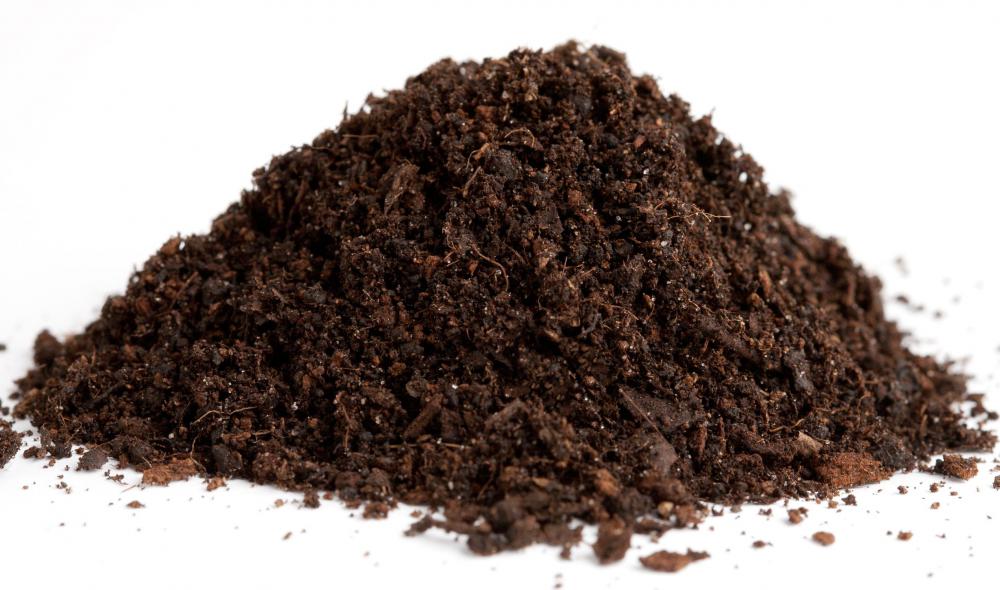At WiseGEEK, we're committed to delivering accurate, trustworthy information. Our expert-authored content is rigorously fact-checked and sourced from credible authorities. Discover how we uphold the highest standards in providing you with reliable knowledge.
What Are the Best Tips for Growing Ginseng?
Ginseng is a plant native to Asia and North America, widely and highly regarded for the medicinal benefits of its roots. It is considered fairly difficult to grow, and even under the most careful cultivation, success at growing ginseng is not guaranteed. The best way to maximize the chances of a successful harvest is to mimic its natural growing conditions as closely as possible.
In nature ginseng grows in heavily shaded woodland and forest areas. It needs well drained but moist soil, rich in organic material, and is a heavy feeder, quickly depleting the soil of nutrients. Those who cultivate ginseng take one of two approaches, growing it in its natural environment, or using shades and shelters to simulate the low-light woodland conditions. Either way, ginseng requires approximately 70%-90% shade to thrive. If possible, growing ginseng in in its natural habitat is preferred as ginseng grown in this way commands a much higher price than ginseng grown using more conventional cultivation techniques.

To start ginseng, most growers use seeds but the seeds must be stratified for two years to be viable. Stratifying involves storing the seeds under natural conditions, or a closely simulated approximation of such. Seeds should be stored in beds outdoors and covered with straw or other mulch. They do not germinate until the second spring after harvesting in autumn. Due to the difficulties in stratifying seed, it is much easier to simply purchase stratified seed than attempting to carry out the process oneself. Stratified seeds are available for purchase from a few sources on the Internet, and one to two year old rootlets can also be purchased and planted.

Soil and environment are very important to consider when growing ginseng as the plant is very particular about the conditions in which it will grow. It requires very rich soil with good moisture retention, but also good drainage. This may seem like a contradiction, but this is not the case. The ideal ginseng soil stays moist but allows excess moisture to drain off and does not get soggy or waterlogged. A high percentage of organic material in a rich humus soil is best.
Shade is paramount when growing ginseng. Ideally, ginseng should be grown in areas in which it might be found naturally, on the forest floor under a thick canopy of mature deciduous trees. Growers often look for other kinds of plants, such as ferns and jack-in-the-pulpit, when determining where to plant ginseng for forest cultivation as these plants are commonly found in the same kinds of areas as ginseng.
Studies of American ginseng have shown that germination and emergence of new sprouts is maximized by planting the seeds at a depth between 0.5 inches and 1.25 inches (1 to 3 cm). Seeds should be sown in the fall, after the leaves have fallen, or in the early spring, before the leaf buds on trees begin to open. Slopes facing north and east are favored for cultivation. All undergrowth should be cleared and removed.
When grown in natural conditions, ginseng requires little care once established. The plant requires at least six to seven years to mature before the root is suitable for harvest, and may need ten years or more. One indication of relative maturity is the number of leaves on a plant. Ginseng leaves are compound, with a first year seedling having one compound leaf, usually with three leaflets. A mature plant will have at least four leaves with five leaflets each. As the plant continues to grow, it may continue to produce more leaves.
Nutrients are thoroughly depleted in areas where ginseng grows, making a particular plot unsuitable for continuous cultivation. Once an area has been planted and harvested, it should remain fallow for several years before planting again. Crops planted in the same area the following year after a harvest almost always fail.
AS FEATURED ON:
AS FEATURED ON:












Discuss this Article
Post your comments